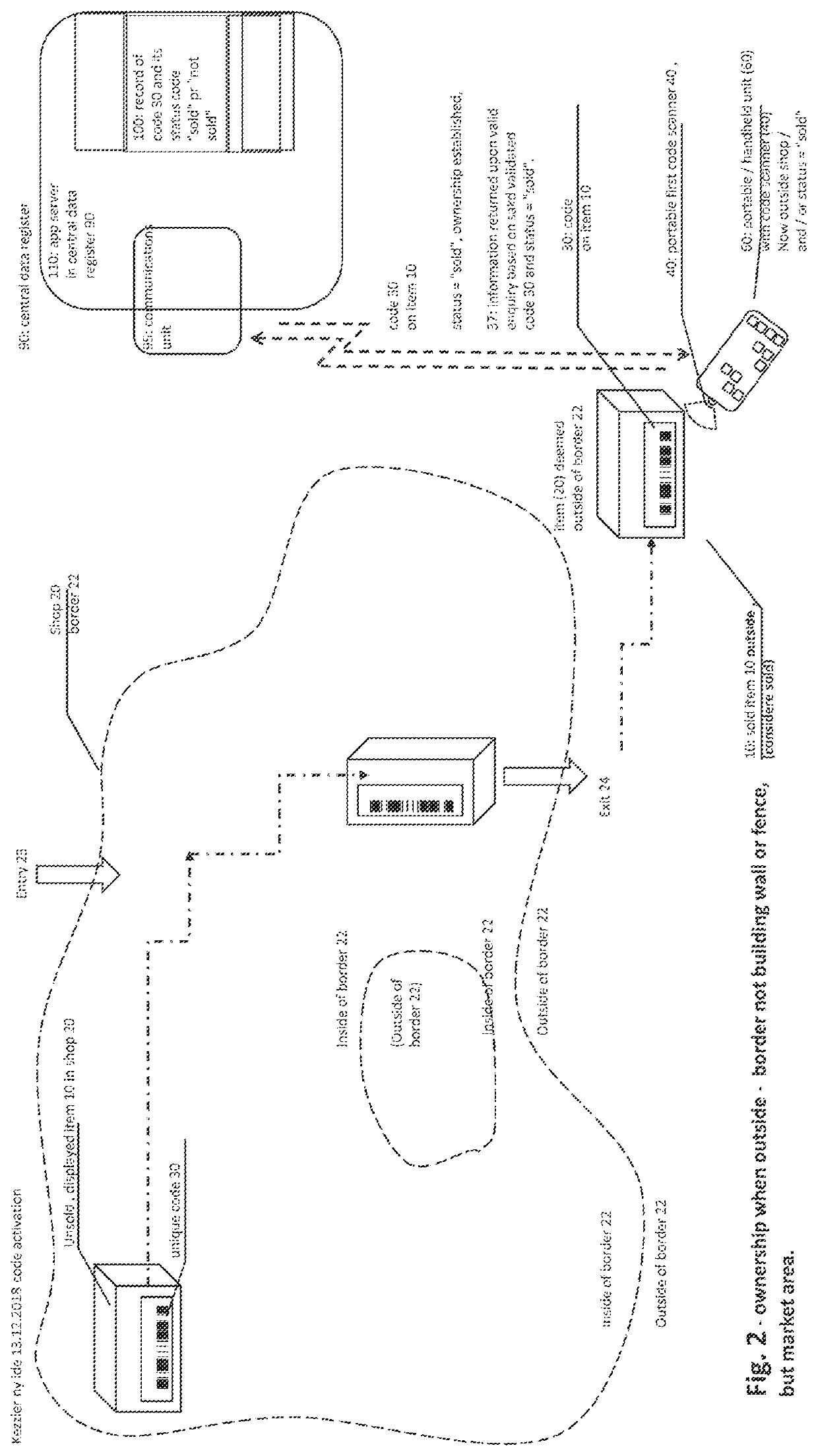Ownership of a marked item outside a shop
a mark-up and code technology, applied in the field of code attribution activation system, can solve the problems of adding undesired costs and difficult to avoid code scanning, and achieve the effects of avoiding codes and benefits, saving brand integrity and package integrity, and avoiding code tampering
- Summary
- Abstract
- Description
- Claims
- Application Information
AI Technical Summary
Benefits of technology
Problems solved by technology
Method used
Image
Examples
Embodiment Construction
[0019]The invention is illustrated in FIGS. 1 and 2, and is code attribution control system, comprising unique codes (30). One of the purposes of the code attribution control systems is to control and manage ownership of unique coded items that can be openly and freely displayed in public shopping areas before a sales transaction, as well as when outside the shop areas whereby an owner might be assumed.
[0020]Each said code (30) is arranged or marked openly legible or scannable on a sales item (10), wherein one or more of said sales items (10) is openly and freely displayed and for sale within a physical border (22) of a physical shop (20).
[0021]Each said item (10) is initially allocated a status code (33) attribute as “not sold” in the attribution control system (91).
[0022]For a consumer to establish ownership or indication of ownership of said item (10), the consumer scans and registers said code (30) of the item (10), when he has brought the item (10) outside the border (22) of th...
PUM
 Login to View More
Login to View More Abstract
Description
Claims
Application Information
 Login to View More
Login to View More - R&D
- Intellectual Property
- Life Sciences
- Materials
- Tech Scout
- Unparalleled Data Quality
- Higher Quality Content
- 60% Fewer Hallucinations
Browse by: Latest US Patents, China's latest patents, Technical Efficacy Thesaurus, Application Domain, Technology Topic, Popular Technical Reports.
© 2025 PatSnap. All rights reserved.Legal|Privacy policy|Modern Slavery Act Transparency Statement|Sitemap|About US| Contact US: help@patsnap.com


